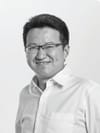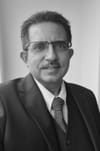Previous Post
Critical Shifts Needed in Malaysia’s Economic Thinking
4 min read
LABOUR IS FINITE, especially in the context of Malaysia which has not had a demographic dividend since two decades ago. Malaysian employers and policy makers ne...
Next Post
Bleisure Travel: A Highly Promising Tourism Sector for Penang
4 min read
BUSINESS AND LEISURE travel, also known as bleisure, is where a person travels for work but also takes time to enjoy the destination for leisure activities. Thi...
You might also like
Uniting Communities Through Sports and Traditions
2 min read
The organisation of groups of people with similar goals have long been a key aspect in human interaction and social functions – it is also what sports clubs are founded upon.
Negaraku: The Sonic Totem of the Nusantara (Part Two)
4 min read
THE ATMOSPHERE WAS abuzz as the resonant “Merdeka” call rang in the newly built Stadium Merdeka. It was 1957. Malaya, the newly independent nation, needed not o...
eSports in Malaysia: What Awaits Competitive Gaming?
5 min read
WHEN LAN GAMING cybercafes first emerged in the early 2000s, they were all the rage. They provided a social and competitive environment for gamers to gather and...





